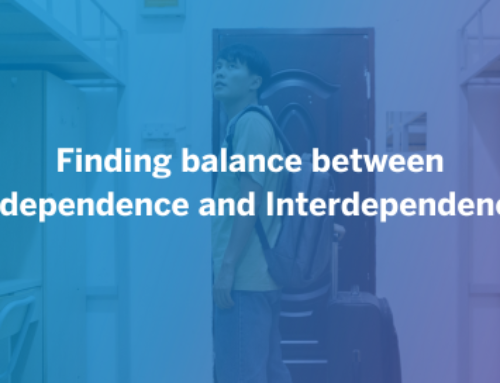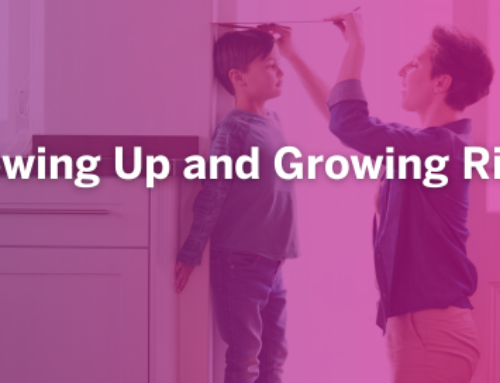
Looking back at my childhood, it is hard to imagine what more my parents could have done to improve my resilience. My parent’s love and care equipped me with the tools I needed to navigate the world with ease. They instilled in me the importance of good values and provided compelling reasons to stay away from the perils of drugs. My older brothers set an example, surrounding themselves with like-minded individuals who valued their families and worked hard to achieve their goals. With all this in place, as my teenage years loomed, my parents couldn’t help but believe it would never ever be their child who falls into the trap of drug abuse. They had done their part.
In middle school, I regarded the idea of drugs as dangerous and idiotic. I believed that those who indulged in it were ingesting poison. While I faced my fair share of struggles, I was always honest with my family and worked to improve. My mom, witnessing my battles with anxiety and ADHD, decided to have a heart-to-heart conversation with me about drugs. She made it crystal clear that dabbling in drugs could lead to a dangerous road and that I needed to make it known to anyone who tried to introduce me to them that they weren’t welcome in my life. This conversation felt strange to both of us, as the idea of me engaging in such behavior felt like a complete impossibility.
I didn’t have a problem with rule-breaking or taking risks. I followed authority well and never appeared to be the type to disregard my family’s teachings. As I entered high school, I was steadfast in my belief that I would never, under any circumstances, abuse drugs. I knew better, and my family had instilled in me the necessary tools to make sound decisions. I had made friends with students who shared the same values and were good athletes, students, and friends.
In my first year of high school, none of my friends or I had tried drugs. I selected a set of friends who were somewhat more defiant and exclusive than my previous group, convinced that conforming to their norms was a sign of maturity and acceptance of myself. Drugs were not on the table though. We mostly focused on other things and assured each other we would never use. Mostly.
Looking back, it is easy to see where the idea of using drugs was beginning to become a reality well beneath our awareness. Our perception of it was shifting subtly. This is how drug use spreads like a contagion. One of our closest friends had an older brother who smoked weed, prompting a discrete openness to the idea in our friend group. Soon one of our friends began to speak frequently of how we planned to use it eventually. Our reconsideration of our stance on drugs was reluctant and somewhat subconscious. We wondered how two of our most sensible seeming friends could take marijuana lightly. Unaware of the contagious nature of drug use, we had become vulnerable to it.
As we began to settle into the high school environment, we inevitably noticed that some of the most popular and confident students were using drugs without any signs of addiction or struggle. My parents had guided me strongly towards an appropriate relationship with risk and self-protection. But the source of the dangers we faced shifted in high school. Risk began to appear more linked to social status than long-term health. These students seemed to be the most well-adjusted. They certainly weren’t showing the symptoms of drug use that appeared in my discussion with my mom. It felt like she had lied to me. Consequently, the notion of using, drinking, and partying started to infiltrate our mind spaces. Social pressure coupled with our naiveté led us to question our initial resolve against drugs. Just one person beginning to use is all it would take to turn the table for so many students.
Before we knew it, that one instance of drug use had occurred. Within a month, the entire friend group transitioned from strict opposition to such behavior to frequent and casual drug use. We had, without knowing it, become completely enthralled in the drug scene. Our reason and level-headedness were replaced by our sense of invincibility; that nothing bad could happen to us because we looked out for each other.
I often highlight to students the numerous reasons I had to not indulge in drugs when I began using. From the conversation with my mother, my mental health struggles, and my issues with academic success, it was clear to me that drug use was a bad idea. And yet, in a moment’s notice, It was so easy to drop all of these concerns when faced with peers using drugs. Unfortunately, many of my peers shared similar apprehensions yet succumbed to drug use in a group setting. Just like that. We were entirely unprepared for the swift change in attitude and behavior that occurred when surrounded by a group of adolescents engaging in such activities.
Clear definitions of what constituted a harmless party and of how far we would let things go were quickly blurred. We emboldened each other’s behavior, encouraging and normalizing the use of drugs no matter the setting. We would encounter other people in our individual communities, encouraging and instilling the same mindset of risk-taking and drug use in dozens more people. Our drug use felt natural, normal, and almost necessary to thrive in our new social scene. We had been heavily influenced by those around us as our judgment of which risks were okay to take had become compromised. The idea of stopping soon came with a departure from the whole of the social environment which we had constructed for one another and lived in. We encouraged addiction. By the time we made it through our second year of high school, it was clear that many of our classmates who had never been at risk for drug use had been similarly tempted by our contagious behaviors.
Strong parenting and good intentions are not sufficient preparation for students when it comes to drugs and alcohol. Providing students with the risks, dangers, and negative aspects of drug use is not enough to protect them; they need to be aware of the way in which that message will be tested. Drug use will most likely not seem dangerous. Addiction may not look like sickness, it will look like fun. To some it should be obvious that it isn’t, but how can an insecure 10th grader who desperately wants to fit in tell the difference.
Prevention efforts must take this into account. Logic and knowledge are dropped in the face of social pressures. I knew perfectly well the reasons why I shouldn’t smoke weed in 10th grade. While increasing knowledge of the risk of addiction may have helped some of the kids in my grade, others would have soon suppressed this knowledge when confronted with others who had already tried drugs. These individuals seem to make a compelling case for vaping, smoking, and drinking. Social media likely only compounds this issue. Resilience towards the initiation of drug use must come from an ability to see through the lies that they will be told, and that they will begin to tell themselves. The decision to abstain was easy to make in the kitchen with my mom, but felt impossible when faced with peer pressure. We need to help students identify when that process is happening, to prepare them for it. For many students, giving them the facts will not shield them from temptation.
When I speak to students, I take time to describe in much detail each step of the cognitive process that occurred when I first saw people using drugs. I detail for them the process of self-deception that occurred in both the context of becoming surrounded by drug use. Most importantly, I try to help them see through the image that is either currently pressuring them, or that will be doing so soon. I was one of those drug users. I was in the in-group, escalating our use, convinced that this thing we had been warned about was indeed harmless. This may be the image they see of their peers, but it is false. I was suppressing all of my deepest concerns. I was distancing myself from the people who truly cared about me. I was putting drug use above my family, my schooling, my hobbies, and the development of my character. That is the decision they face. That is the reality of the students who seem so unaffected. The most important message that I want kids to take away is that people who are struggling with addiction look okay, but they aren’t. They are beginning a process of chronic self-deception, avoidance, and fearful social mimicry. Although I cannot ensure how the message will be received, my hope is that it will impact at least one child. As someone who has witnessed firsthand how the use of drugs can quickly spread among peers, I also believe that the opposite can be true.
By: Danny Z
Danny is a in house LSIS Prevention Speaker.








Leave A Comment